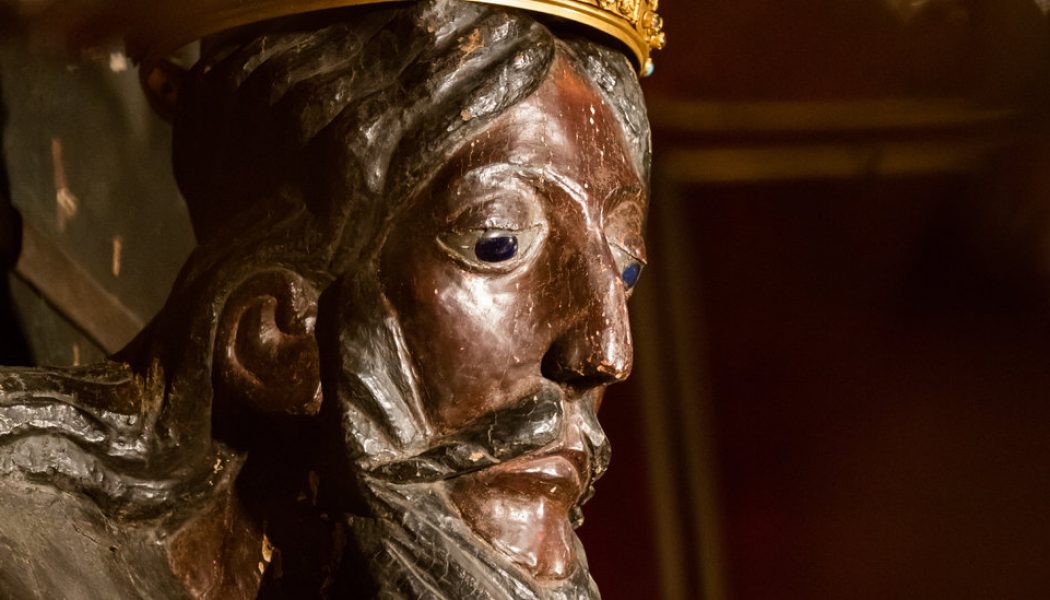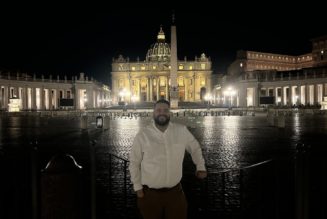
ROME — For centuries, in a picturesque Tuscan town near the Mediterranean coast, legions of pilgrims came to venerate one of Christendom’s most treasured relics — an eight-foot-tall wooden crucifix known as the “Volto Santo de Lucca.”
According to the legend, “The Holy Face of Lucca” had been sculpted by a divine hand and remained hidden for centuries before an Italian bishop discovered it on a pilgrimage to the Holy Land in the eighth century. The crucifix was put on a ship with no crew and miraculously set sail to the Tuscan coast, where an angel helped guide the relic to its final home in a cathedral in Lucca.
On Friday, science provided another story — and it is remarkable in its own right.
The crucifix was shown to be the oldest surviving wooden carving in Europe. And it remains in remarkable condition, the downcast eyes of Christ on the cross still captured in dramatic detail.
“A new chapter opens for art history,” said Annamaria Giusti, one of Italy’s best-known art restorers and a consultant for the Cathedral of San Martino, which authorized the study of the crucifix to coincide with the commemoration of the 950th anniversary of its foundation.
Speaking at a news conference in the nave of the cathedral, Ms. Giusti said that the dating of the relic to a period between the end of the eight century and the middle of ninth century raised fresh questions about its origins and its iconography and would lead to new areas of research.
“The Volto Santo was regarded as one of the true icons of Christ,” comparable to the Shroud of Turin, whose devotees believe shows an image of Christ, said Stefano Martinelli, an art historian who is an expert on the icon.
It is also, he said, a “symbol of pride for a city-state that remained an independent republic for seven centuries, with a celestial defender on its side.”
For Lucca, it was not just a devotional question, “but also political and of identity.”
Stories, passed from generation to generation, held that the crucifix had been carved by Nicodemus, who is mentioned in the Bible several times, including helping to prepare the body of Christ for burial.
By the late Middle Ages, the image was so well known in Northern Europe that it became an object of devotion of the French nobility. “By the face of Lucca” was an oath sworn by William II of England and it is mentioned in Dante’s Inferno.
And it remains central to two heartfelt religious ceremonies in Lucca every spring and fall.
Though the crucifix had been the subject of many theological discussions given its central place in Christian iconography, it only attracted the attention of art historians about a century ago.
For lack of other works to compare it to, early scholarship saw stylistic similarities with a late 12th century artist who worked mostly in northern Italy, and though debated, many art historians came to believe that the current crucifix was a 12th century copy of the lost 8th century original.
That theory was soundly contradicted by the new radiocarbon results.
Last December, experts from the National Institute of Nuclear Physics took three samples of wood from the crucifix — one from each arm and from the lower part of the gown adorning Jesus, as well as a tiny sample of the strata of canvas that allowed paint to better affix to the sculpture.
Radiocarbon dating at an accelerator mass spectrometry lab in Florence dated the wood “to the end of the seventh century and the middle of the ninth,” said Mariaelena Fedi, the researcher from the institute who supervised the scientific investigation. Also known as carbon 14 dating, the technique is mainly used to date organic materials, like wood.
“Generally canvas gives a more accurate dating,” because wood can have been cut years before it is carved, Ms. Fedi said at the news conference. Finding canvas to test “was a great opportunity.”
Enthusiasm over the new dating should not overshadow the icon’s religious significance, said the Rev. Paolo Giulietti, the archbishop of Lucca.
For 12 centuries untold numbers of pilgrims had come “to pray, to touch, to cry, to rejoice in front of this image.”
But Ms. Giusti pointed to the fact that unlike bronze or marble, wood is very perishable, and that 1,000-year-old statues are few and far between.
“The miraculous thing is that it’s managed to survive to our days,” said Ms. Giusti.









